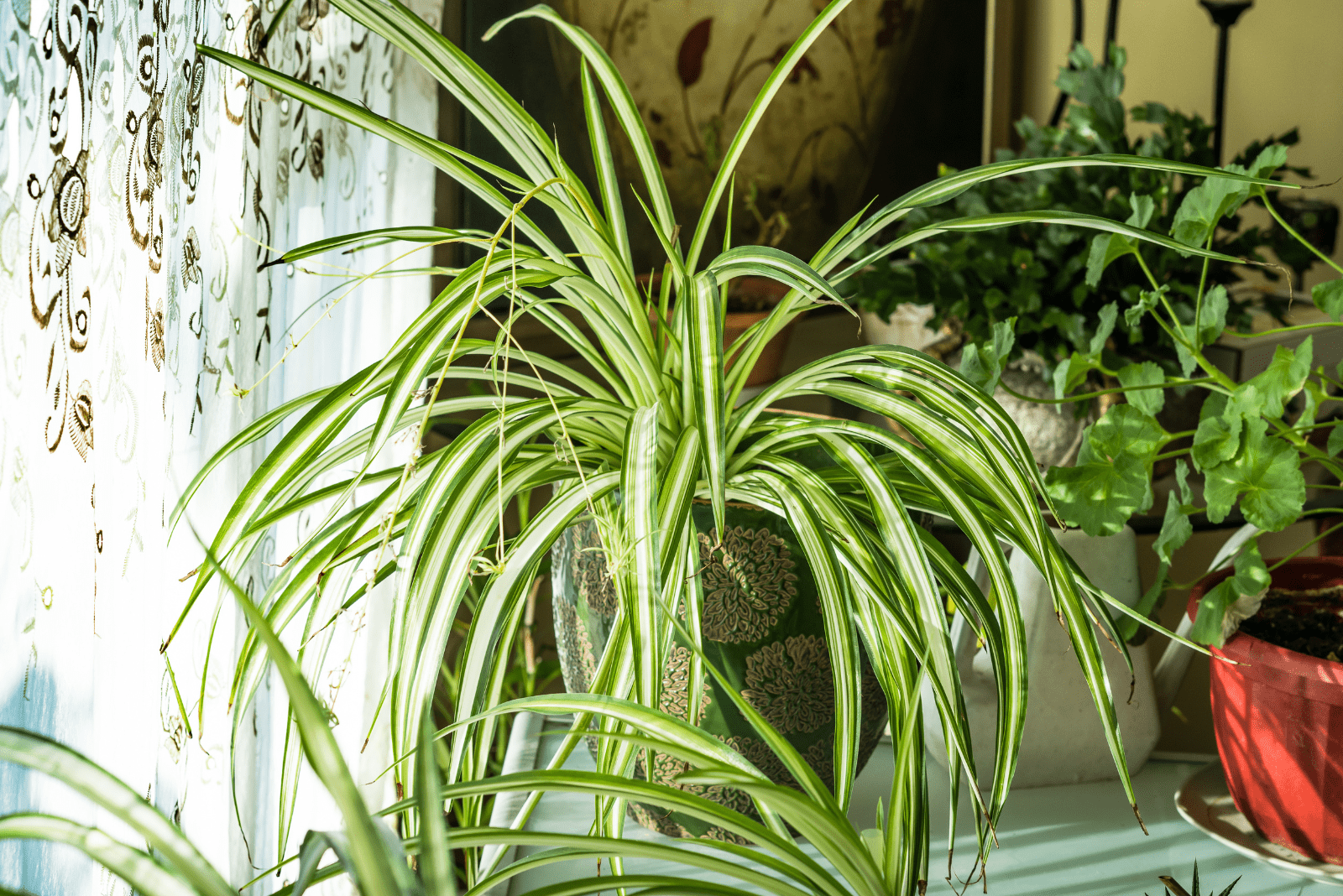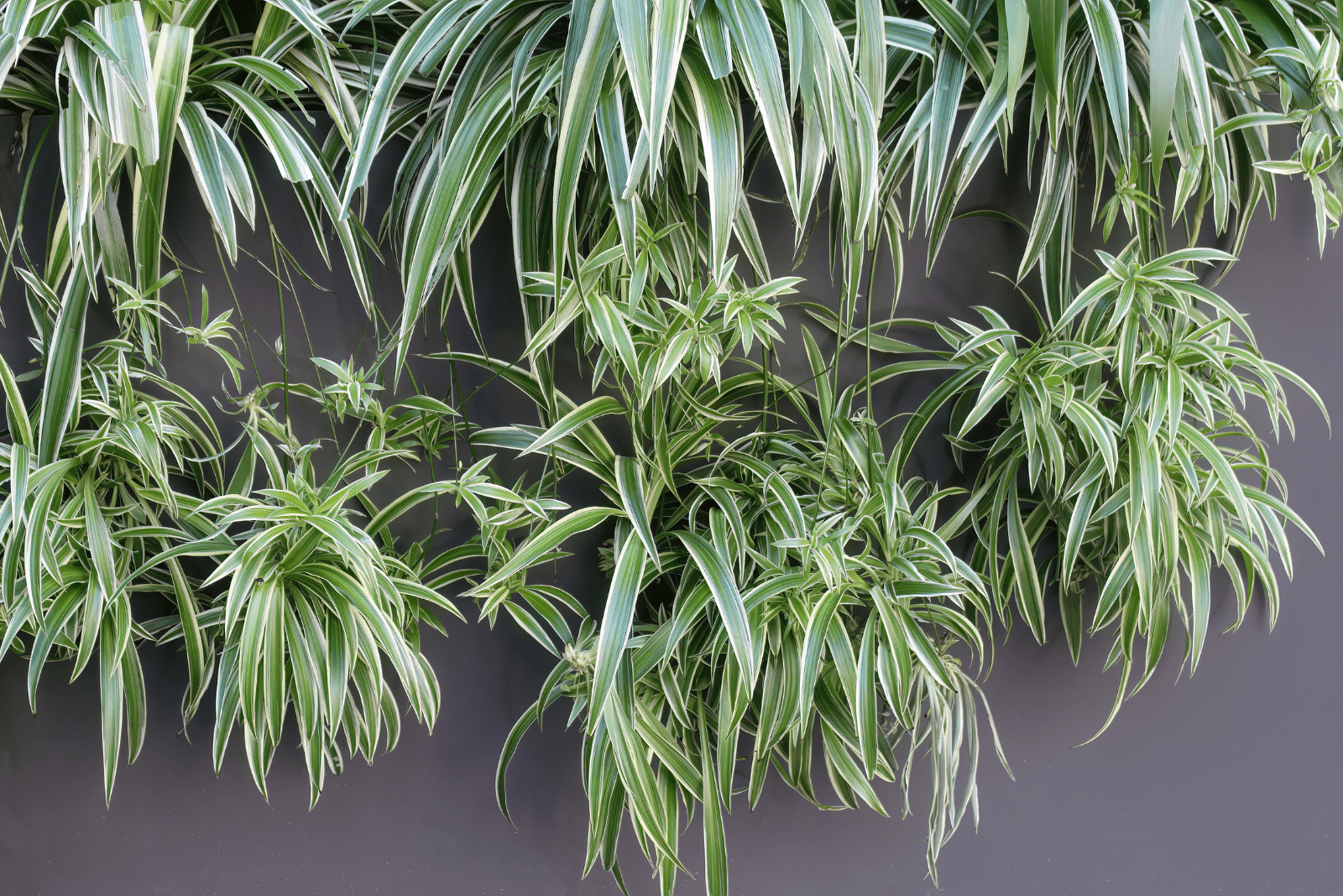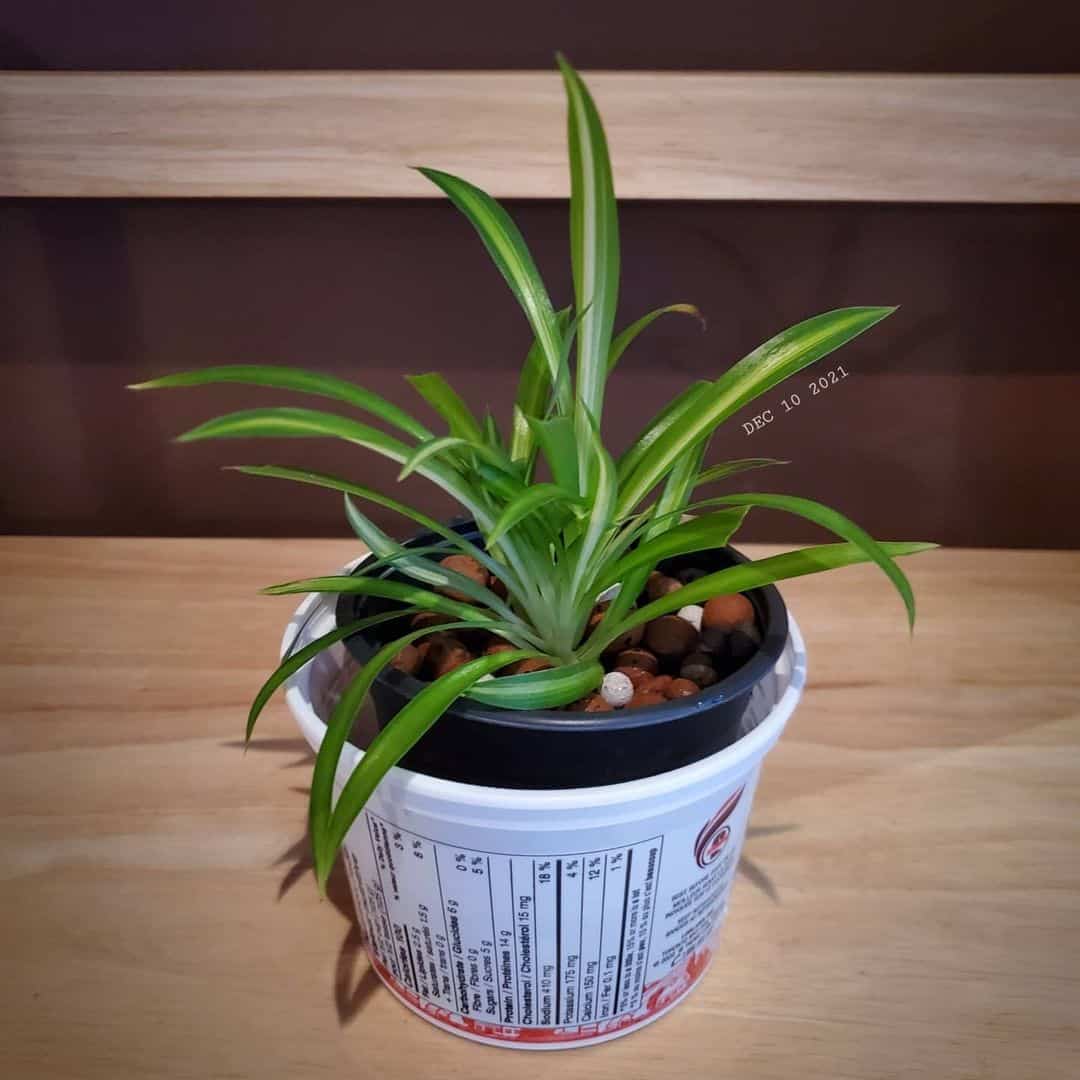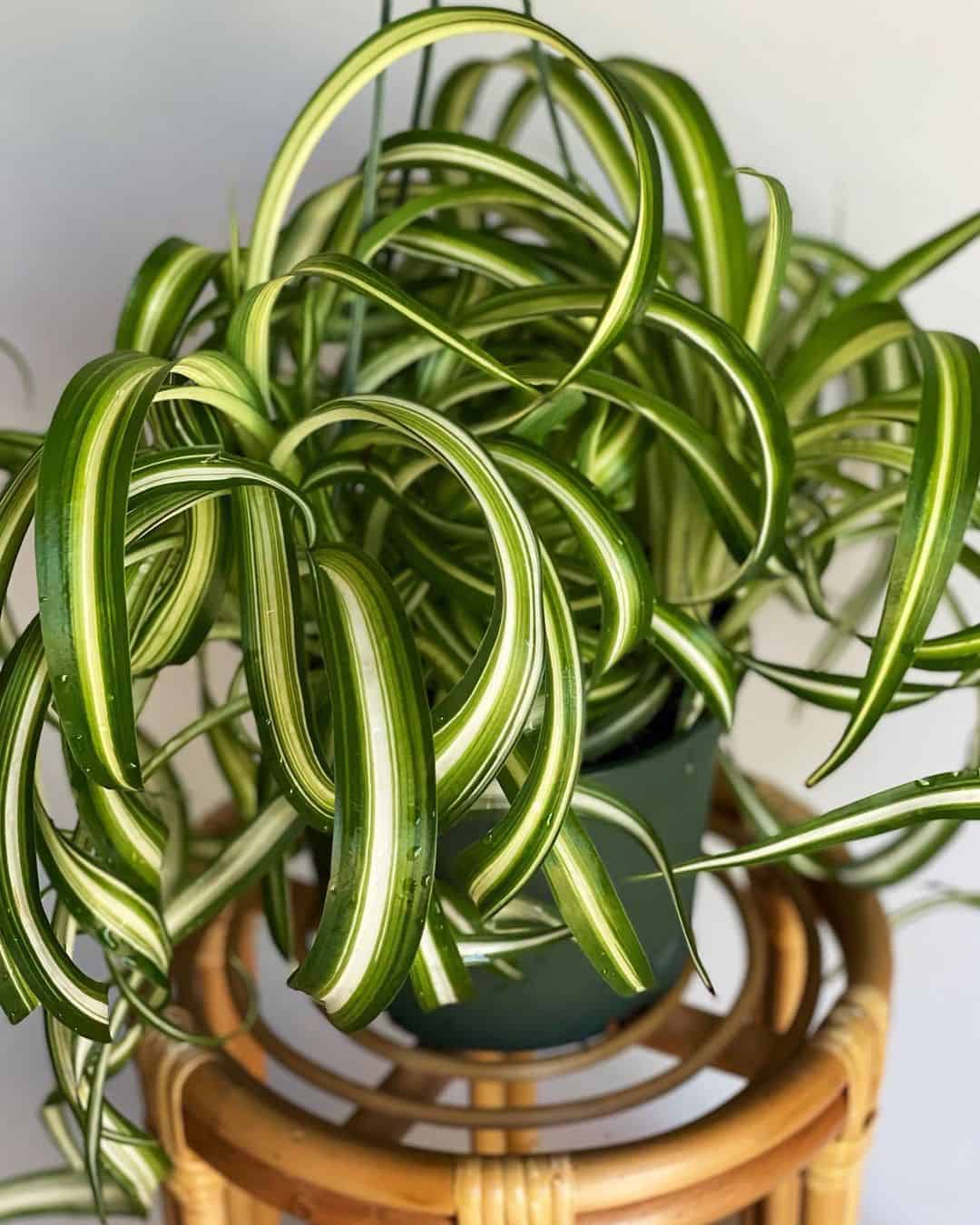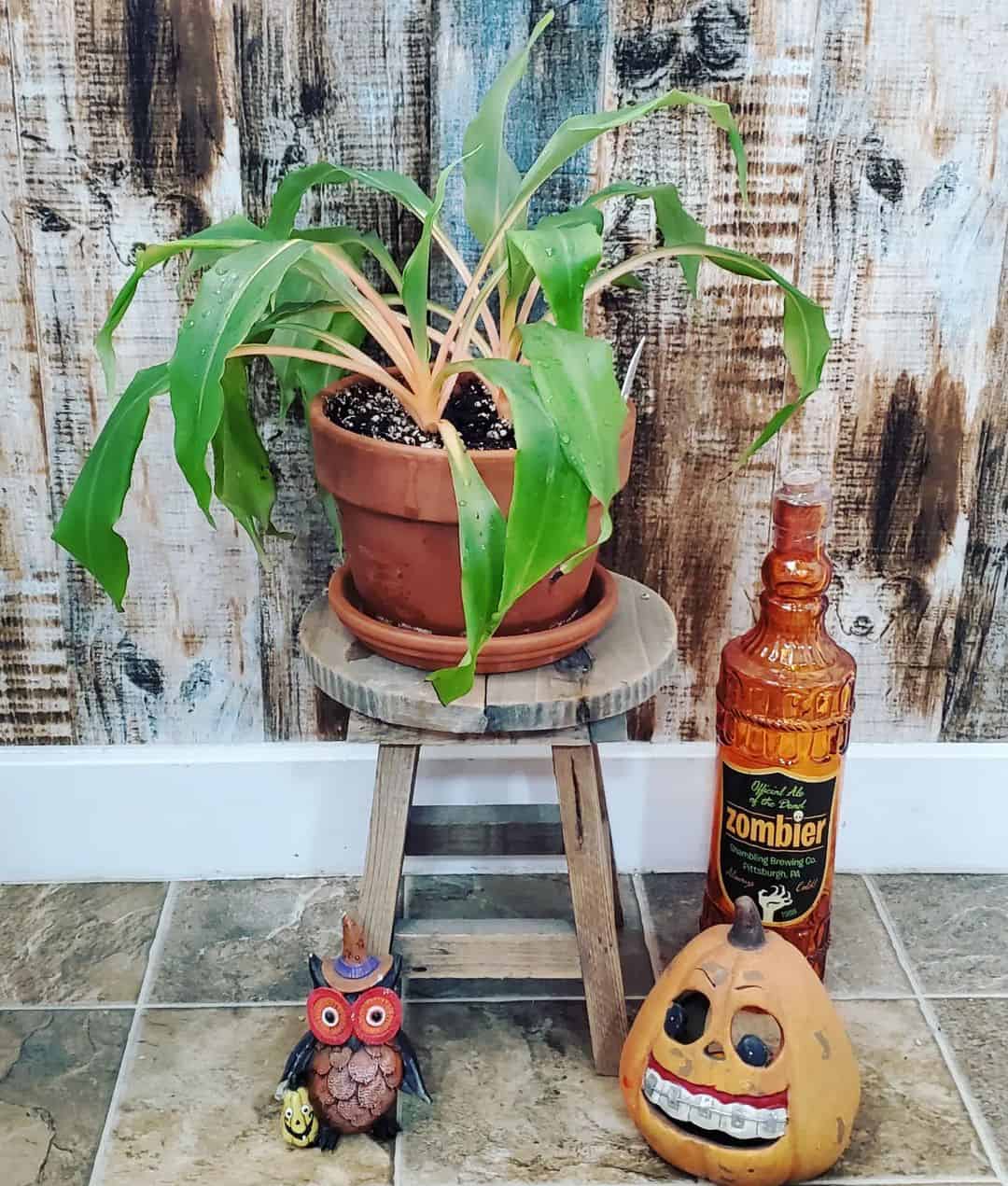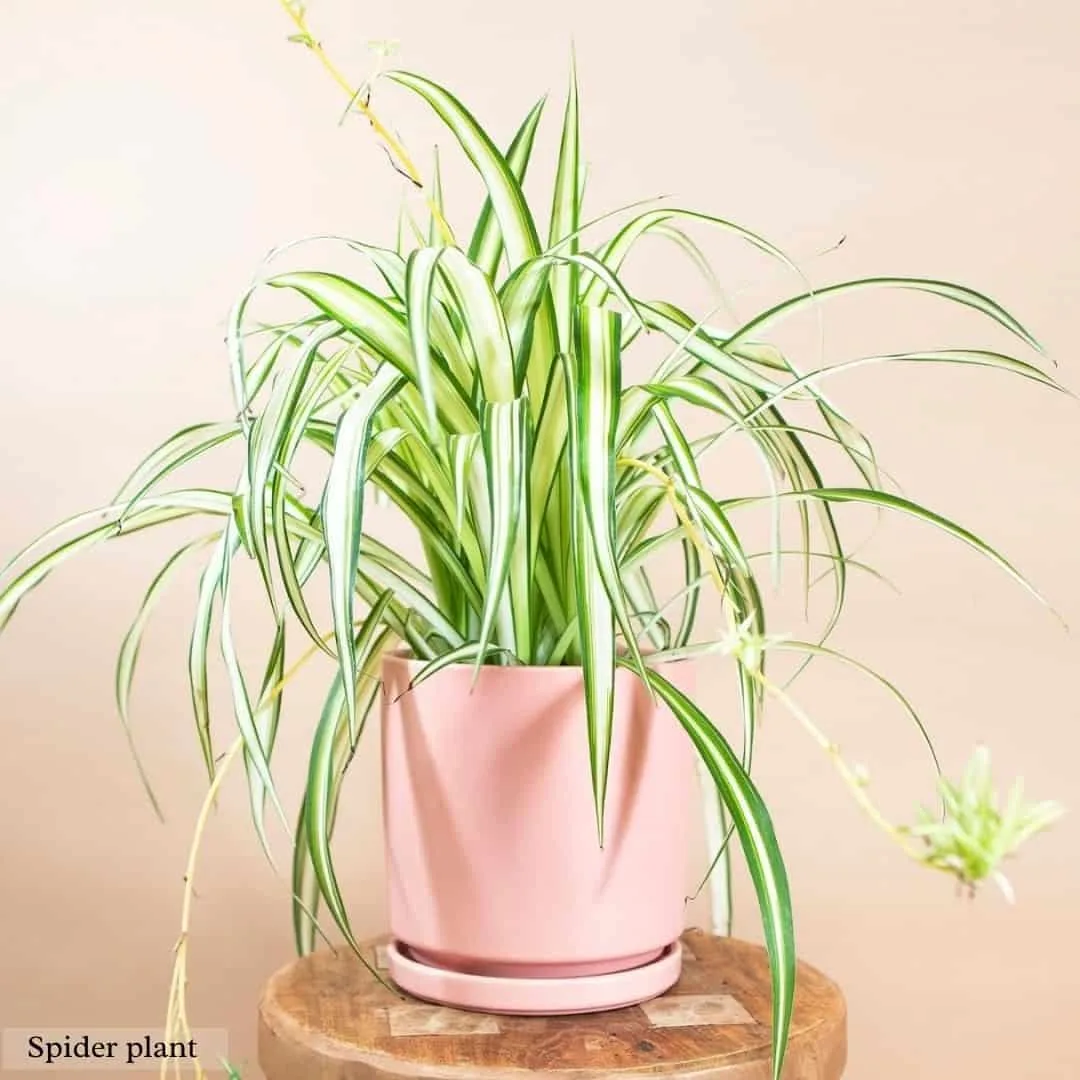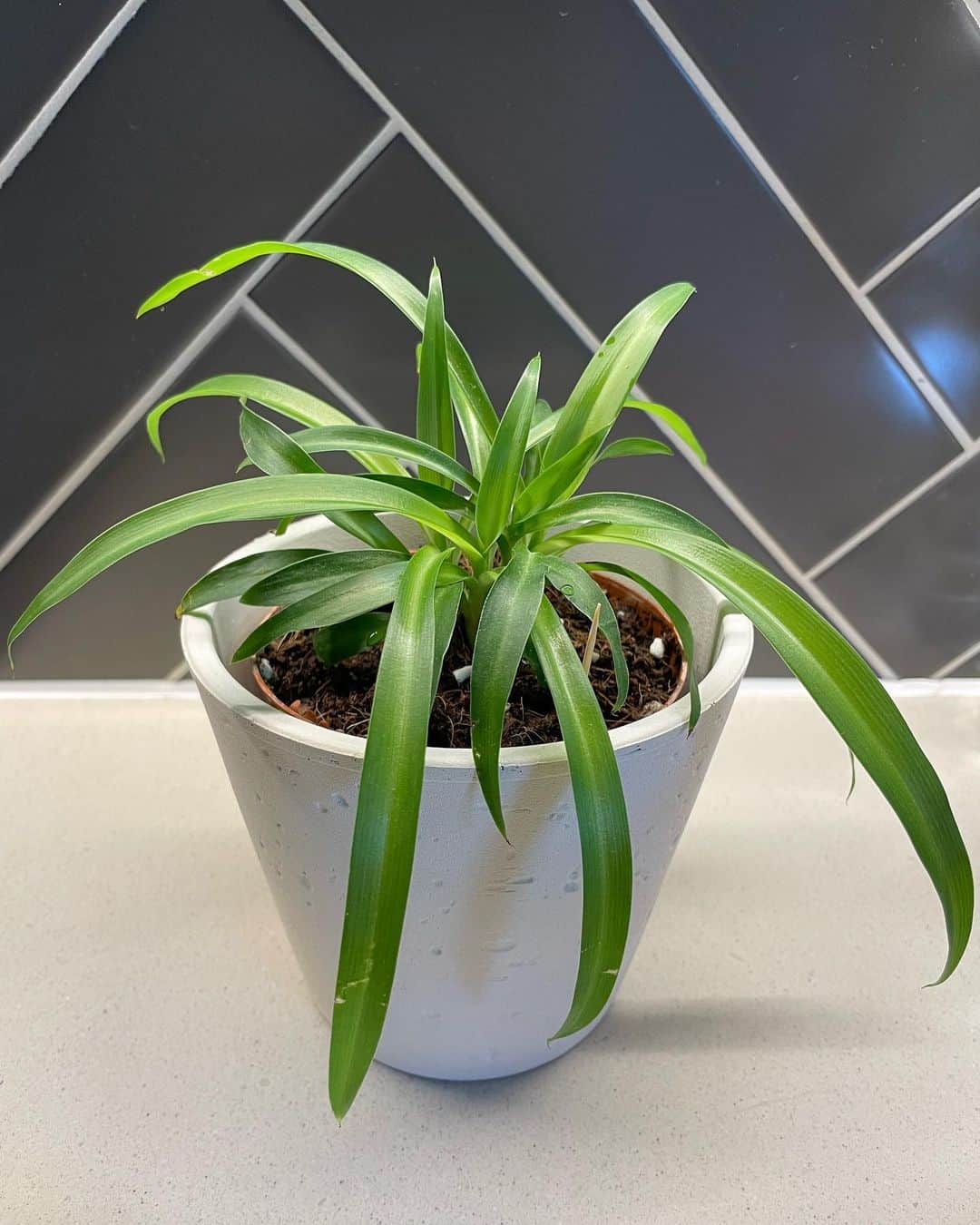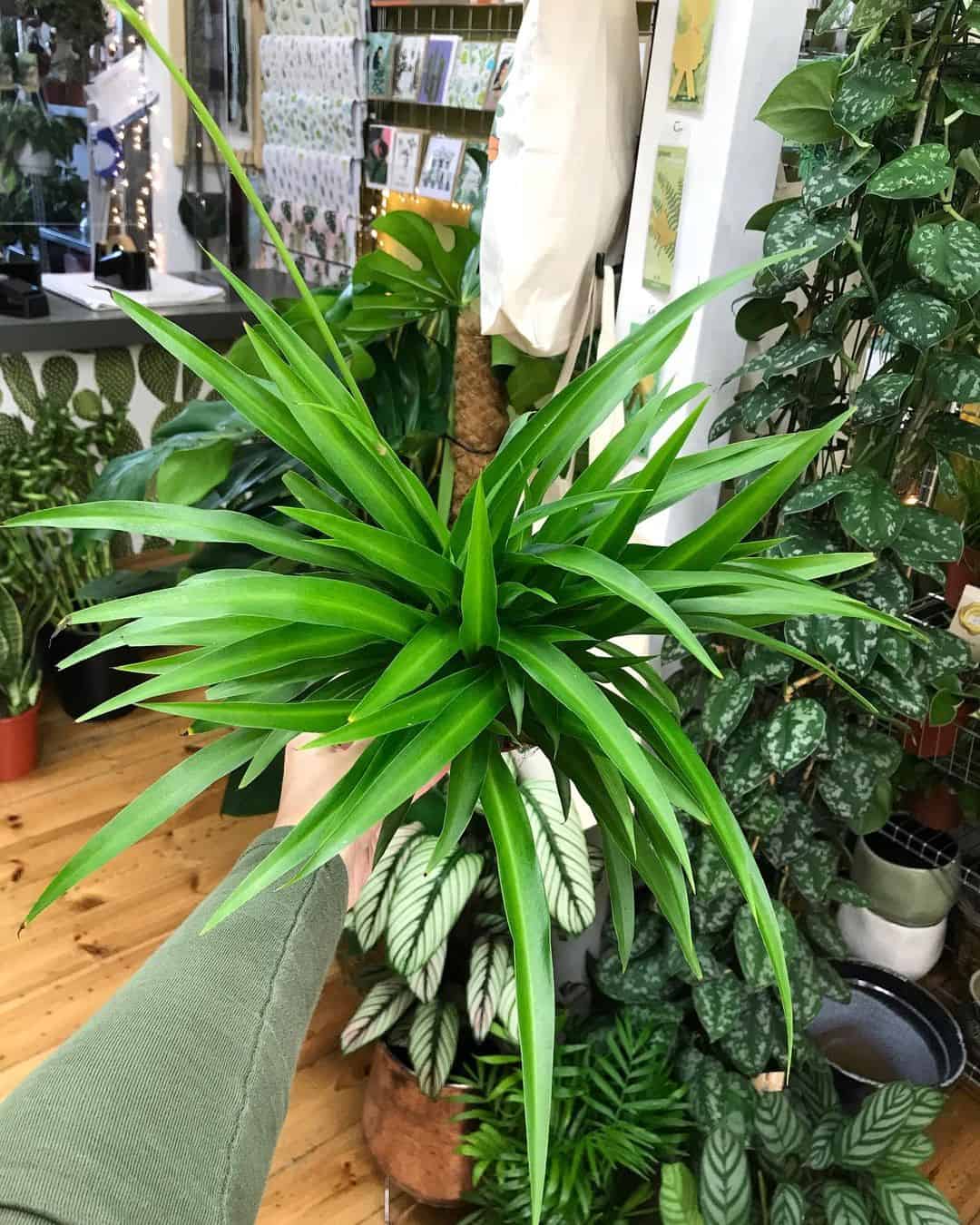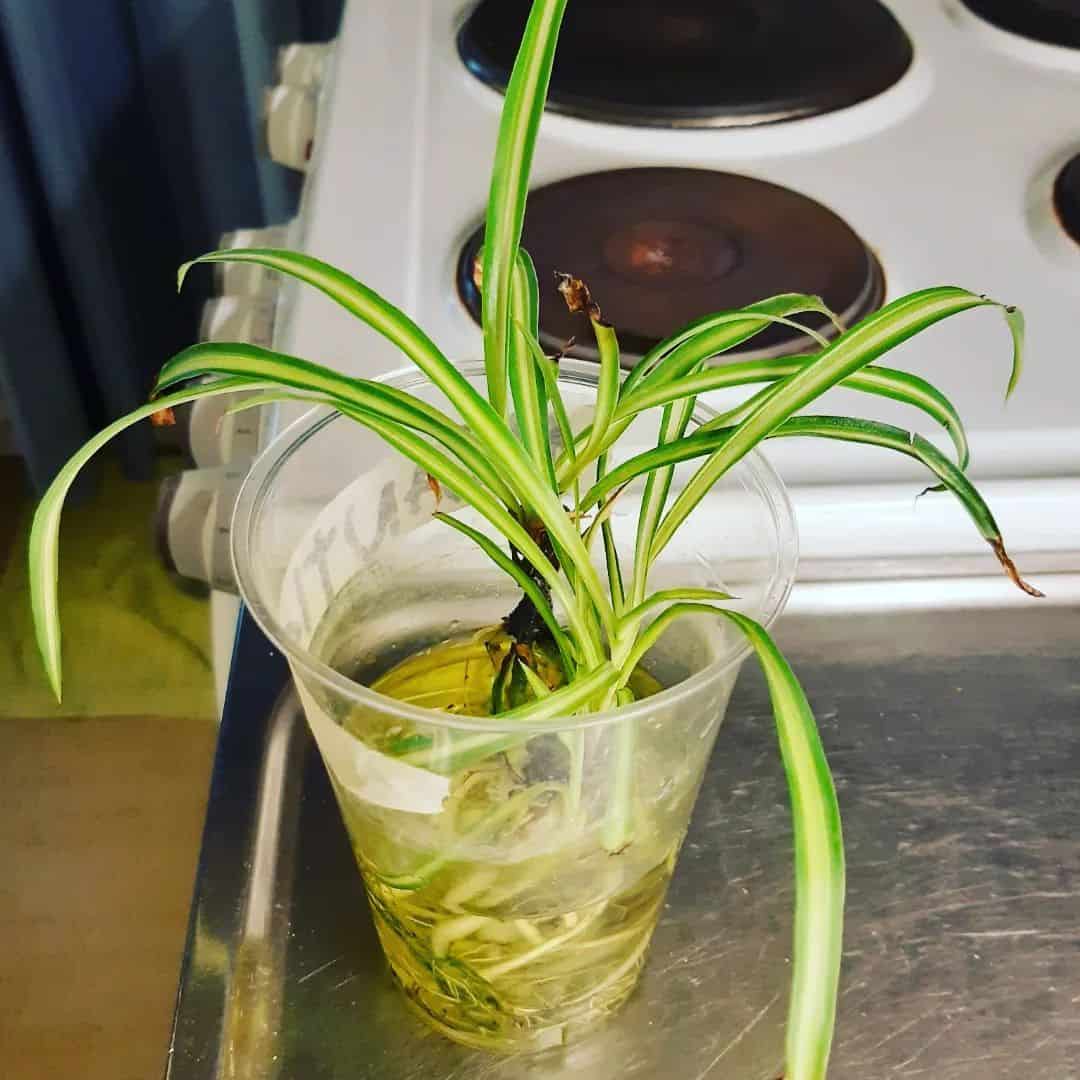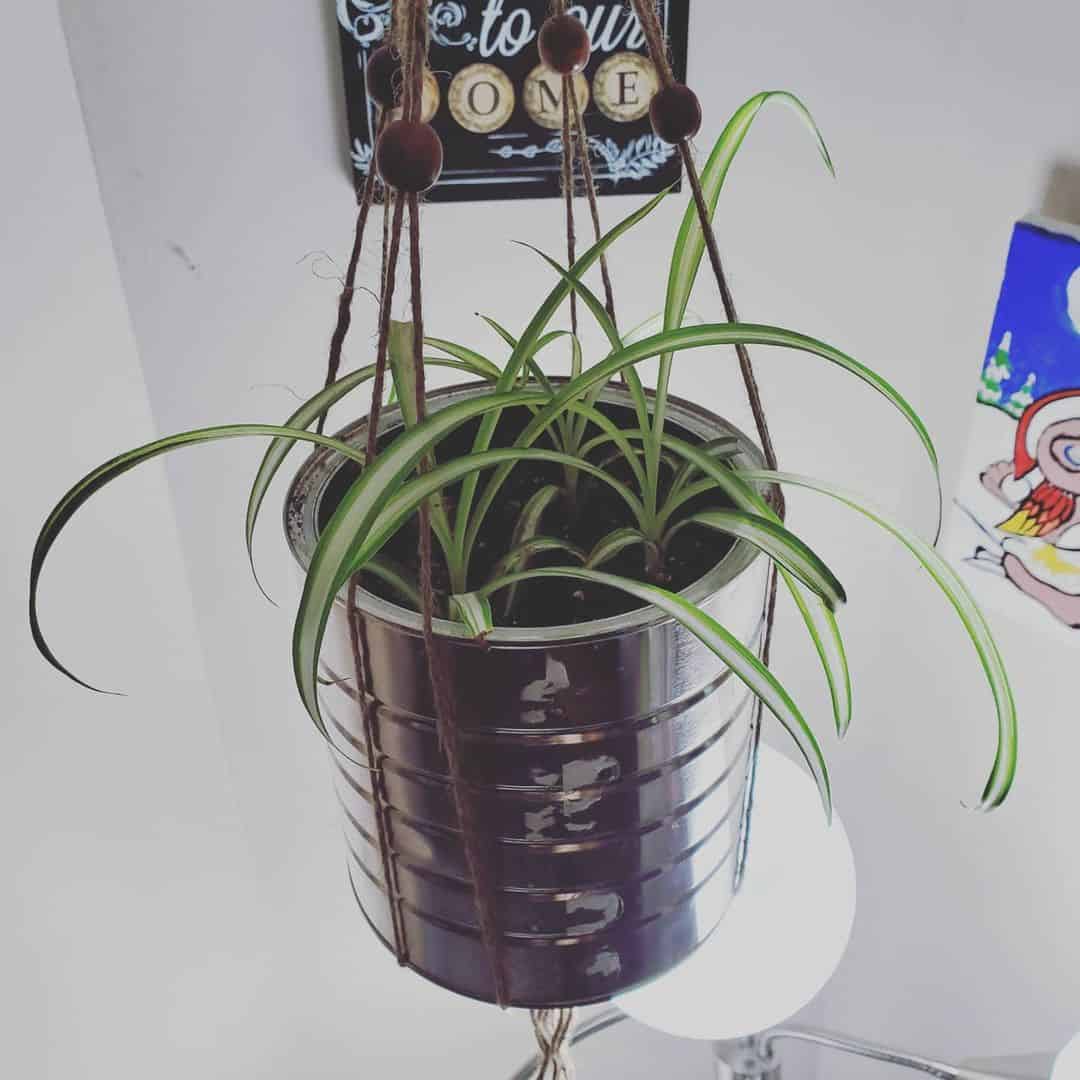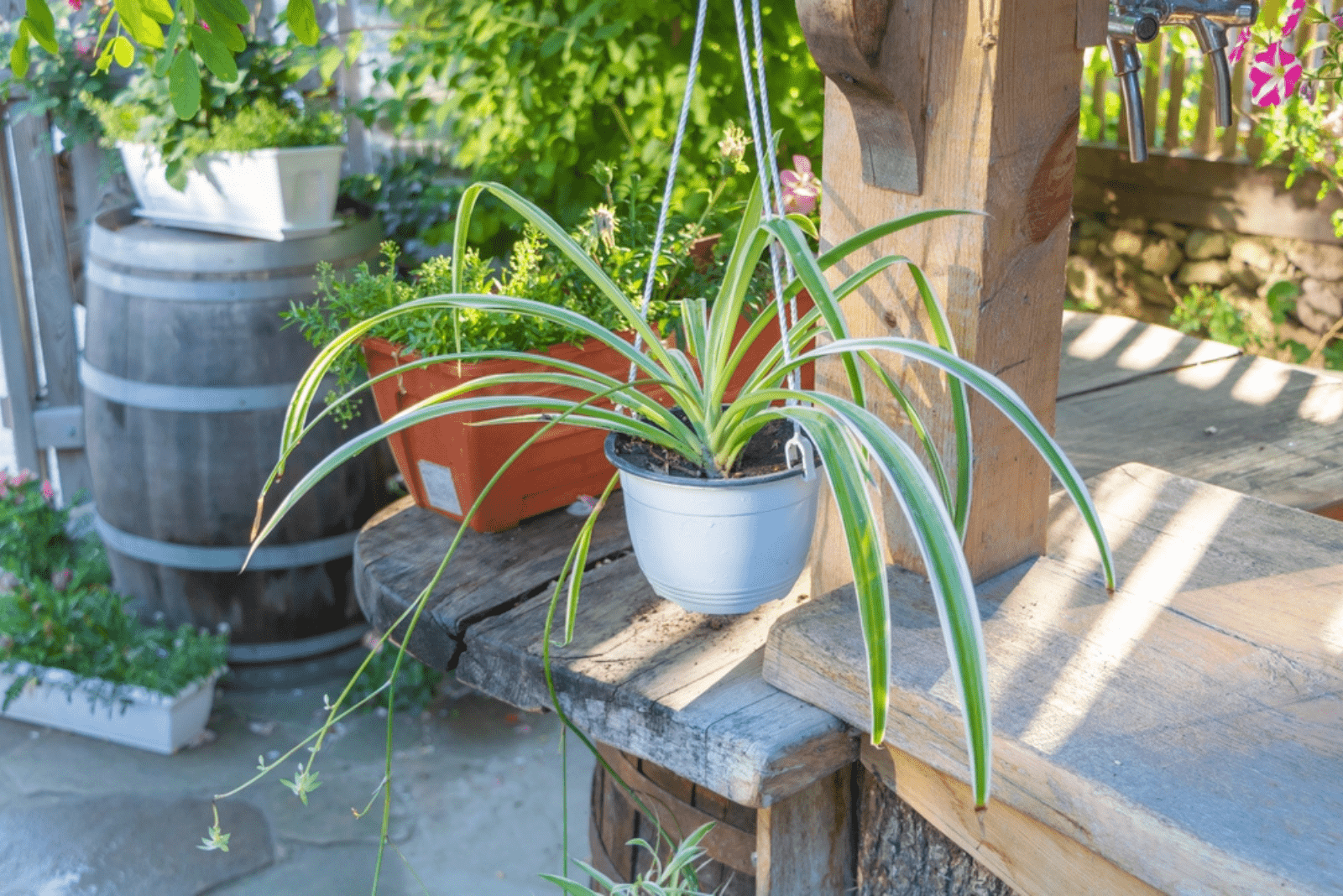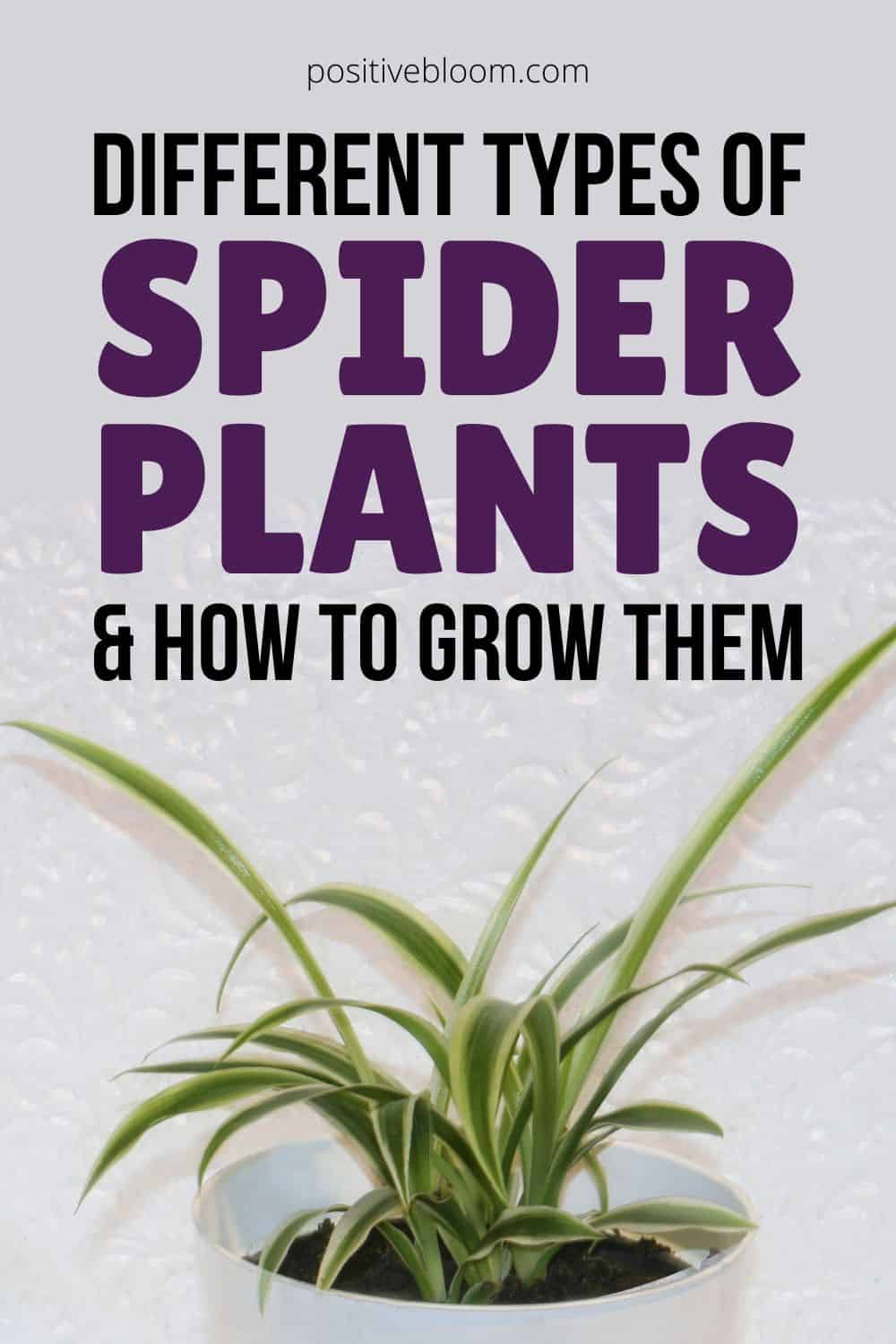Although plants from the same genera share many common features, the appearance is what makes each species different.
Spider plants are beautiful and popular, and whether you want to buy your first or you have already grown one, it makes sense that you want to learn about all the different types of spider plants!
Today we’ll discuss the most common types as well as some rare and new ones.
Before we move on, here’s some basic info!
[table id=295 /]Let’s begin!
Types Of Spider Plants
Spider plants don’t share any common features with spiders, and though the plantlets may resemble spiders, they are neither dangerous nor scary!
Here’s a list of the most common types of spider plants:
Variegated Spider Plant (Chlorophytum Comosum ‘Vittatum’)
A well-known evergreen cultivar from the Chlorophytum genus is the variegated spider plant, commonly found under the name Vittatum.
What makes this spider plant special? The leaves are typically green, but the shape and texture are what make the Vittatum stand out.
The leaves are velvety to touch and have striking light green vertical stripes. If you ensure all the necessary conditions, you can expect this variety to reach 1-2 feet in length and width.
This Southern African native Variegated Spider Plant is cultivated primarily for its eye-catching leaves. It’s simple to grow and is popular in agriculture because of its resistance to drought, tolerability of disease, and pest-friendliness.
Due to these features, it has become a very popular houseplant. You’ll see it growing in hanging baskets all over the world.
It’s a hardy plant in USDA zones 10-11. Although it likes light, you shouldn’t expose it to direct sunlight as it may burn the leaves. When grown indoors, I suggest placing it in bright indirect light to avoid any issues.
Be careful and meet its requirements to avoid losing variegations.
Zebra Spider Plant (Chlorophytum Laxum Zebra)
I was curious when I first heard the name zebra spider plant. What could the plant look like if it has the name zebra?!
It does look like a zebra, as the white edges and green centers of the leaves give the impression of unique zebra stripes!
You can grow them in hanging baskets, but they also look amazing when grown as ground covers.
If I had to choose the top 5 easiest varieties to grow indoors, this Chlorophytum variety would undoubtedly get a place on the list.
The elongated leaves form an arching structure and make a very stylish addition to any room.
I also recommend this spider plant variety if you don’t have much space and prefer smaller pots. It will reach 12 inches in height and about 24 inches in width if you fulfill the necessary growing conditions.
Grow your Chlorophytum laxum ‘zebra’ in soil that drains well, and amend it with organic ingredients. Keep these types of Chlorophytum plants out of low light and direct sunlight to prevent leaf damage. If you see that your spider plant has pale leaves, the light level isn’t suitable.
Although the zebra plant isn’t prone to pest infestations, keep an eye out for mealybugs because it can be pretty difficult to get rid of them.
Hawaiian Spider Plant (Chlorophytum Viridescens ‘Hawaiian’)
Photo from: @plantfan311
I have the perfect plant for you if you want an exotic addition to your home! The Hawaiian spider plant, otherwise known as golden glow, is a unique hybrid that shares features with all the other varieties.
When Viridescens ‘Hawaiian’ is in the juvenile growth stage, it exhibits a lovely white and green variegation. Unfortunately, this feature disappears in the mature growth stage.
However, the plant still looks fantastic, and you can be 100% sure that you have this type if you notice the leaves change.
I recommend planting this variety during spring or summer. If you spot young plants growing on already established plants, divide them and plant them in smaller containers.
Young Hawaiian spider plants need plenty of water, so never skip watering and always pay attention to other conditions. You’ll be rewarded with new roots before you know it.
When I say other conditions, I’m speaking of light and fertilizer. You’ll need to keep the soil moist at all times to prevent the leaves of your Hawaiian spider plant becoming thin.
This is a fast-growing variety, so you can expect it to reach 11 inches pretty quickly.
Variegated Bonnie Spider Plant (Chlorophytum Comosum Bonnie Variegated)
Photo from: @skysplants2020
This adorable variety has a compact structure and rarely exceeds 8 inches. A special thing about the variegated Bonnie is that it produces flowers in its natural habitat.
However, you will rarely see the stunning white flowers indoors. But if you work very hard at plant care for this unique variety, you might just see it bloom!
You can see it blossom in spring and summer if you visit the warmest regions of South Africa in that period.
The Variegated Bonnie looks fascinating, so flowering isn’t too important as a thriving mature Bonnie will amaze you with its green leaves and white stripes.
As with every other variegated plant, the Bonnie needs a lot of bright indirect light to preserve its variegations.
Don’t let the soil get soggy to avoid dealing with a dying spider plant!
Bonnie Spider Plant (C. Comosum ‘Bonnie’)
Photo from: @thesimplehouseplant
We have to thank Carl Peter Thunberg for this variety. He discovered it in 1794 and gave it the name, “Anthericum comosum”.
It took time for botanists to determine which genera this plant belongs to, and it wasn’t until 1862 that this plant became part of the Chlorophytum genus and got the name we use today, Bonnie.
The most significant advantage of this plant is that it’s an air purifier, which means that it lessens the levels of many pollutants in the air, including benzene and formaldehyde.
If you grow other plants similar to spider plants, this variety will fit in well.
The growing conditions you’ll need to ensure are the same required for the variegated variety. If you want healthy and curly leaves, give your Bonnie a lot of indirect light and keep its soil moist (but not overly wet!).
Bichetii Grass (Chlorophytum Laxum)
Photo from: @indah_houseplant
It has magnificent green leaves that remove many different airborne contaminants.
Bichetii requires little maintenance, which makes it the perfect plant for beginner growers. Unlike other common houseplants, bichetii (and all other spider plants) isn’t toxic, so you won’t have to worry about your child or pet being poisoned if they ingest the leaves.
This also makes it easier to choose the right location, which would be near a window that gets indirect light.
The arching leaves have creamy white edges, and the plant itself resembles grass. Another thing that makes bichetii grass stand out is that it doesn’t produce offshoots like other spider plant varieties.
Compared to other varieties, this Chlorophytum grows pretty tall – and can reach 2 feet in the right conditions!
It’s not a demanding plant, it simply needs well-draining soil, bright indirect light, and moderate watering to thrive and preserve its glossy, narrow leaves.
‘Fire Flash’ Spider Plant (Chlorophytum Amaniense ‘Fire Flash’)
Photo from: @halloweenmischief
This compact herb has decorative leaves that are sporadically arranged. The leaves are silvery with solid green stripes.
What makes this variety unique are the leaf stalks (petioles), which can be orange or red. The leaves also have wavy edges that make this type easily recognizable.
The remarkable leaves are easily damaged by direct sunlight, so place your fire flash in partial shade.
This plant doesn’t like low light, so if you spot paleness or yellowing you should check the light levels.
This variety can reach about 17 inches in height, and it will still reach its full potential even if you neglect it a bit.
Soil drainage plays a vital role in developing this type of spider plant. To ensure better drainage, choose a pot with drainage holes and add perlite or pumice to the potting mix.
Feed the plant in spring and summer using liquid fertilizer, and stop fertilizing when fall arrives.
Reverse Spider Plant (Chlorophytum Comosum Reverse Variegatum)
Photo from: @loving_nature_plant
This hanging plant grows up to 2 feet tall, so it’s suitable for all rooms. You’ll notice it producing plantlets in the fall, and you should use them for propagation. A few more reverse spider plants sound like a great idea!
This variety is a perfect indoor plant because it despises full sun, and it’s easier to avoid this issue indoors.
When friends ask me about plants perfect for offices with no windows, I always suggest spider plants, especially the reverse variegated varieties!
Ocean Spider Plant (Chlorophytum Comosum ‘Ocean’)
Photo from: @plant.hooker
My ocean plant is in its mature stage and is 11 inches tall, so that’s what you should expect as the maximum height.
This variety produces many offshoots, which is why it’s easily propagated. You can also propagate it by division. It’s so easy that these plants are abundant, as even beginners can propagate them without too much effort.
If you decide to grow ocean spider plants, just ask for them in your local plant nursery, where you’ll undoubtedly find one.
It’s hardy up to USDA zone 10b. Therefore, warmer temperatures are a must for this variety.
Even low-maintenance plants require specific conditions to thrive. As well as temperature, these conditions are related to light, watering, and soil.
Luckily, this plant isn’t a drama queen, and moderate watering, bright indirect light, and soil with good drainage will suit it fine.
Green Spider Plant (Chlorophytum Comosum ‘Green’)
Photo from: @green_auntie
It’s interesting how plants have so-called standard varieties. In this case, the situation with the standard variety is a little bit different.
Different varieties of spider plants have some features in common when it comes to foliage. For example, green and white combinations are the most common. You’ll also find varieties with yellow edges or creamy white centers.
But there is one variety that doesn’t have any other colors except solid green; the Shamrock, a solid green spider plant with narrow, elongated leaves that originates from Southern Africa.
What makes the Chlorophytum comosum shamrock so special? Well, this variety is the rarest of them all!
Unlike Chlorophytum comosum’ variegatum’, shamrock doesn’t have variegations, which means that it’s easier to care for this variety because preserving variegations is the hardest part of caring for these plants.
Therefore, if you are the type of gardener who prefers simple things and you’re not picky about leaf color, I suggest you try to find a shamrock spider plant.
Lemon Spider Plant
Photo from: @plantletshop
I always search for new varieties, and one I found recently is the amazing lemon spider plant. Just like the standard green variety, the lemon spider plant features only one color.
As you can guess, the foliage is lemonish-green, which makes this plant a perfect addition to any household.
If you live in a tiny apartment or you are looking for a plant for your bathroom, the lemon spider plant will do great.
This variety has adapted well to all conditions; low light or bright light, moist or dry soil, high or moderate humidity – everything works well for it.
Due to these features, this variety also thrives outdoors and makes fascinating ground covers.
Tiny, non-toxic, and air-purifying, I could talk about the advantages of this variety all day!
Chlorophytum comosum ‘Atlantic’
Photo from: @matsvin1
The combination of colors is the same as for the other spider plant types – green edges and a white stripe along the center. However, the green part of the leaf is somewhat thinner, so the white centers grab the attention first.
If you give it enough space it can grow up to 15 inches tall, which makes it a perfect hanging plant.
This plant tends to get root bound, so you’ll need to repot it every two years.
The Atlantic will grow in a variety of soil types, as long as they drain well. I recommend adding draining materials such as perlite, coco coir, or pumice.
Moist soil is another thing this plant requires! I mix peat moss into the soil to aid with water retention.
Don’t forget about the temperature and humidity – keep it in a warm place where humidity is relatively high (use a humidifier if unsure).
Spider Plant ‘Violet Queen’ aka Purple Queen Spider Plant
Photo from: @spyra_the_shewolf
The purple spider plant features fragrant blossoms, and in addition to having a fantastic scent, this houseplant also develops a stunning shade of violet, which makes it an ideal choice for home décor.
If you are a beginner and love the color purple, this variety is perfect for you.
First, you don’t have to worry about light as long as it’s not in direct sunlight. As far as the soil is concerned, just don’t let it stay soggy or too dry for an extended period.
You shouldn’t worry much about repotting as this variety grows through plantlets and rarely becomes root bound.
Another great thing is that this plant is easy to propagate. Just select a healthy plantlet and divide it from the mother violet queen. Plant it in soil and provide it with bright light until you notice new leaves and roots.
That’s pretty much it! Stick to the usual spider plant care, and your new violet queen will grow healthy and thrive.
Spider Plant Care Guide For Beginner Growers
It’s true that there are many different types of spider plants, but they all have some things in common. When you learn how to care for one variety, it will be easy to adjust the conditions to the other.
The care guide below will show you the basics of making each spider plant happy. It will be extremely helpful to beginners.
And for all my master gardener readers, correct me if I make mistakes in the comments below.
Let’s get started!
Light
Even though we all think tropical plants prefer direct sun, there’s a perfect explanation for why they don’t.
The massive leaves of tall trees in the rainforests of South Africa hide the leaves of smaller plants and serve as protection from direct sunlight.
To keep our plants happy, the best idea would be to mimic the conditions of spider plants’ natural habitat.
Spider plants adapt well to different light conditions. Still, if you want to keep them healthy and preserve the color and features of the leaves, I recommend placing them in bright indirect light.
Remember that the leaves are sensitive and don’t like excessive light.
Temperature
The temperatures are warmer in tropical areas, which is why spider plants grow best in warmer USDA growing zones.
Keep the temperatures between 60 and 80 degrees Fahrenheit to avoid issues such as wilting or discoloration.
There’s one thing Chlorophytum plants despise, and that is temperature fluctuations! If you want to avoid temperature stress, make sure to move your spider plants away from heating sources or cold drafts.
Humidity
Spider plants can thrive in different humidity levels as long as they are higher than 40% and lower than 70%,
The best way to check if humidity is right for your spider ivy is by regularly checking the soil and the overall appearance of the plant.
For example, higher humidity keeps the soil constantly moist, so it’s easier to overwater your spider plants. The problem becomes serious if you notice yellow leaves, which may indicate root rot.
However, if the humidity is too low the soil will dry out so fast that your spider plant may dehydrate. The leaves will curl, become crispy, and what once were yellow edges become brown.
A humidifier can help you with the issue, especially one that has the monitoring option.
Soil
When choosing soil for spider plants, two essential things to consider are pH level and drainage.
You’ll need to ensure slightly acidic soil with a pH between 6.0 and 6.5.
Don’t worry too much about soil type; it will provide the spider plant’s needs as long as it has good drainage.
I always add perlite and sand to regular potting soil to help with any drainage issues.
Watering & Fertilizing
The key to proper watering is keeping the soil moist (not overly wet and not too dry). To achieve this, make sure the topsoil is dry before watering it.
Water more when the temperatures are high (summer) and less during the dormancy period (winter).
Although Chlorophytum plants aren’t heavy feeders, they do get hungry during the growing season. Fertilize them with balanced liquid fertilizer to promote growth.
Potting And Repotting
Repotting isn’t something that you’ll need to do often when you grow spider plants, and it’s not common for these plants to become root bound.
Just refresh the soil every two to three years and use a slightly larger pot to ensure more space for the roots.
You’ll need to repot if your spider plant suffers from root rot or any other disease.
Pruning & Cleaning
When pruning, make sure to remove the leaves from the spider plant’s base. This will promote new leaf growth.
Use sharp and sanitized cutting tools to avoid damaging and transmitting diseases.
You should also remove dust from the leaves to keep the leaves glossy. Remember that paleness doesn’t always mean disease!
Common Issues
Spider mites, scales, and aphids may visit your spider plant, so check on it regularly.
These plants aren’t prone to diseases, just avoid overwatering as it will attract harmful fungi that use the roots as the food source.
Wrapping Up
All types of spider plants share three main features: air purifying, low-maintenance, and non-toxic.
The colors of the leaves, size of the plant, and growth rate depend on the species, but no matter which one you choose, you’ll have a beautiful plant on your hands!
The great thing about the Chlorophytum genus is that it consists of many plants, so I’m sure you’ll find one that’s right for you!
Until next time!
Like this post? Share or pin it for later!


